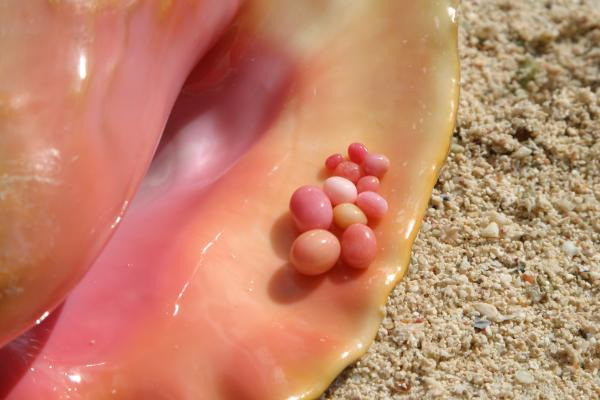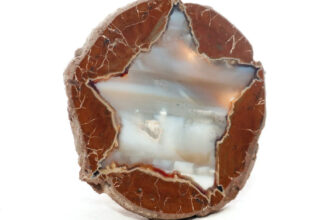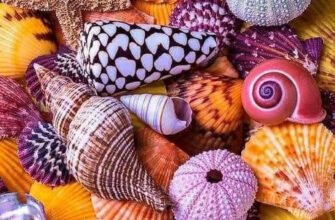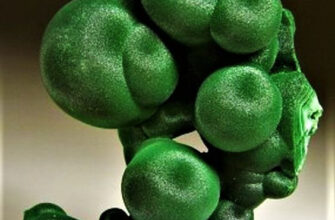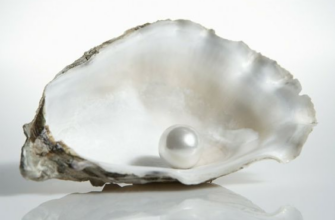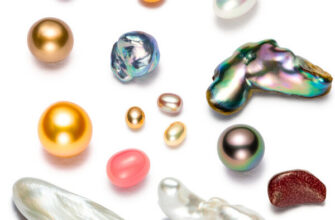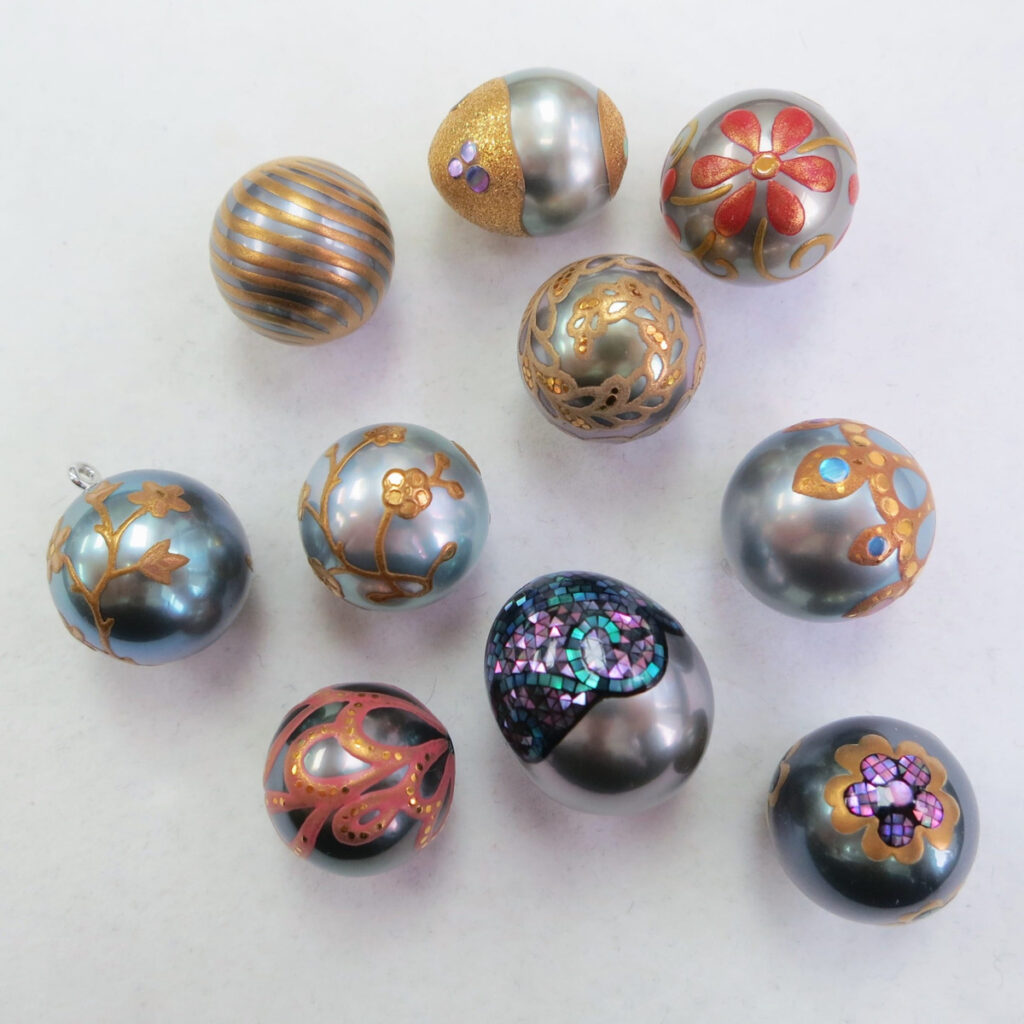Pearls of the color of a gentle, dawn morning, are produced by the Conch Royal Clam, which is a large snail enclosed in a beautiful mother-of-pearl shell, while classic pearls are the “product of production” of oysters.
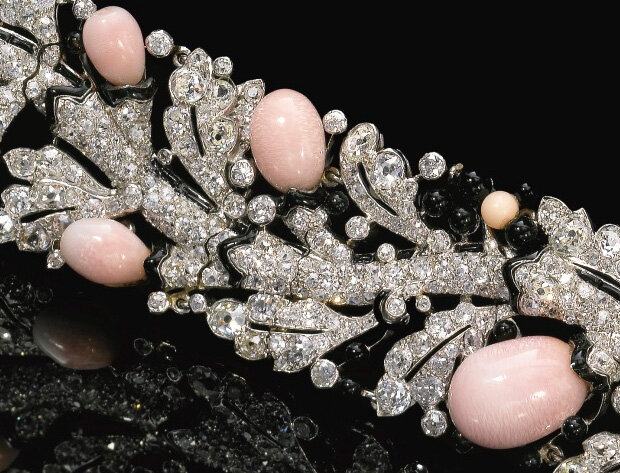
Natural Conch pearls of delightful pink color have been valued since ancient times. Conch does not have a mother-of-pearl effect like classic pearls. Unlike traditional pearls, Conch pearls have a porcelain, ceramic luster. This is caused by the composition of the pearl and how light interacts with the layers of calcareous nodules.
As already mentioned, the Conch pearl is a muted coral color, most often oval in shape. White and brownish colors can also be found, although pink and salmon shades are the most common and popular.

The most valuable Conch pearls are those that exhibit an iridescence reminiscent of the flame pattern on the pearl.
This structure is formed by layers of calcium within the Conch shell, which form in concentric layers just below the surface of the pearl.
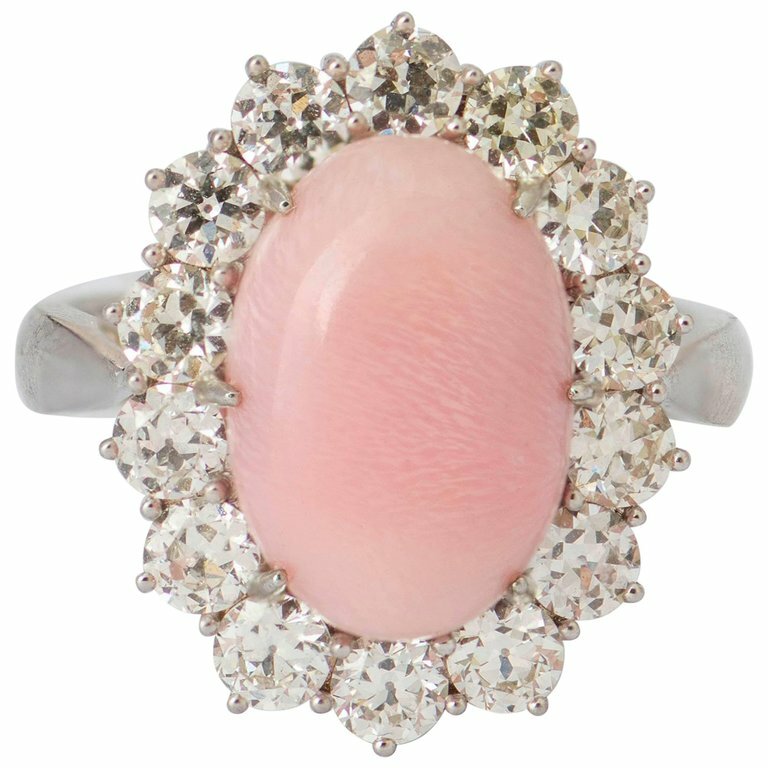
Shell pearls are heavier than traditional oyster pearls and are therefore measured in carats rather than millimetres. Conch shells live in warm tropical waters from the Caribbean to Bermuda.
Shell pearls are less common than traditional pearls, at about 1 in 10 compared to 000 in 1 with traditional pearls.

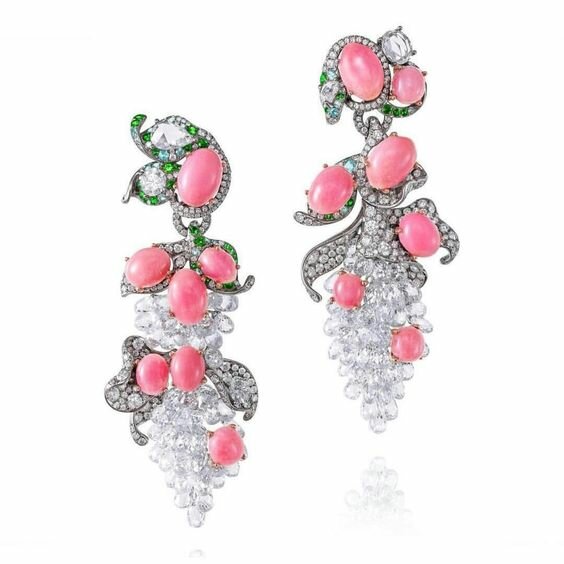
These magnificent pearls began to be used in jewelry in the Victorian era (1837-1901), one or more pearls were framed with loose diamonds, examples in the gallery⏩:
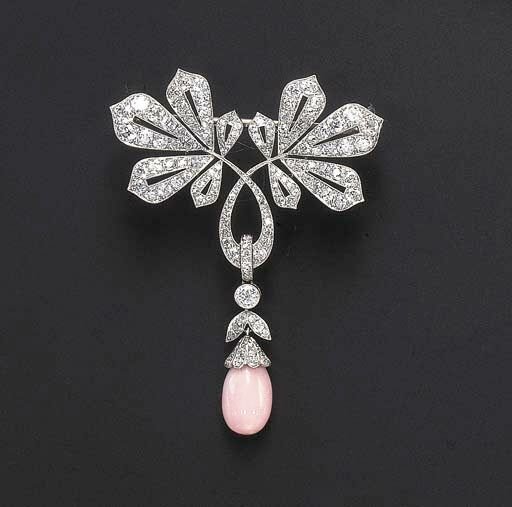
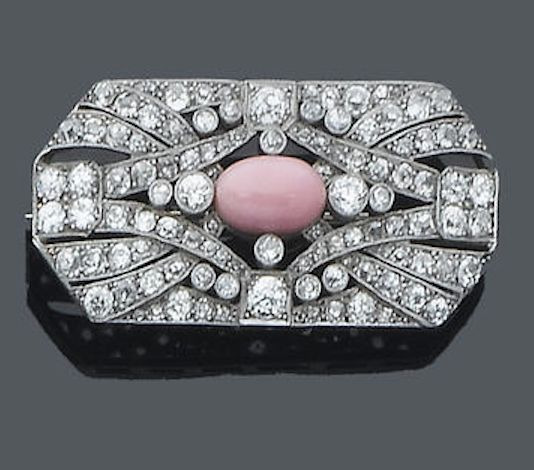

A wonderful precious plot of the Victorian era - a branch of wild rose.
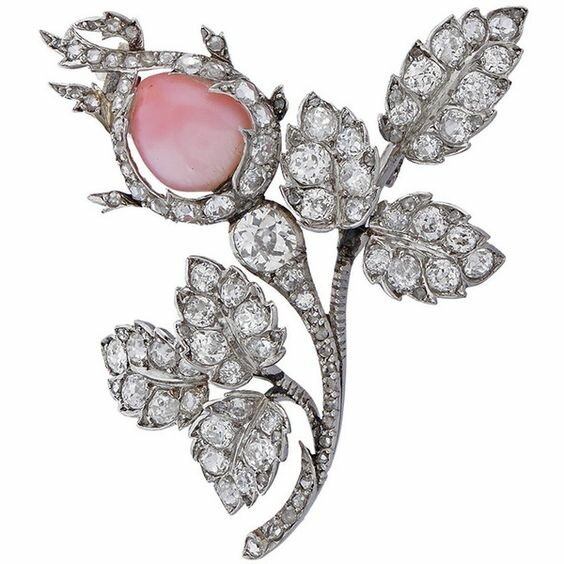

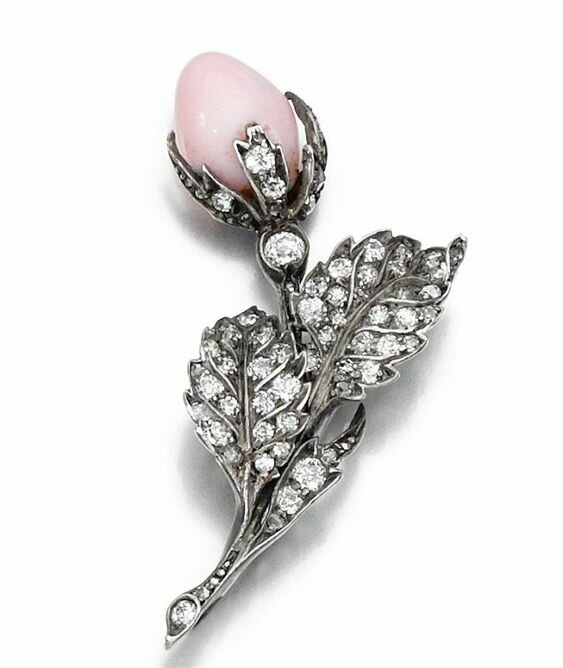
In addition to the most magnificent pink pearl, the shell of the Royal mollusk itself was used in jewelry, for example, the most delicate cameos were cut out of them:
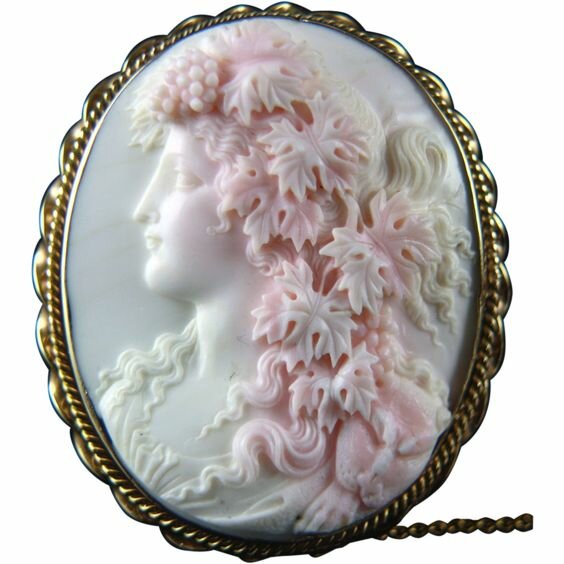

Jewelry with Art Nouveau Conque pearls:
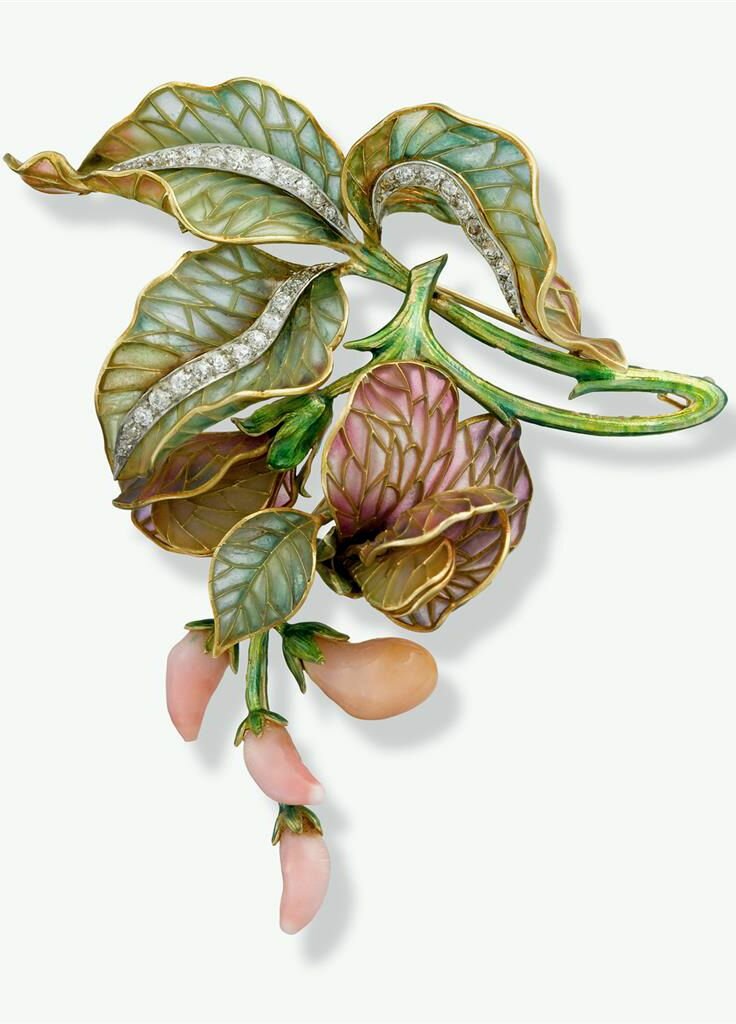
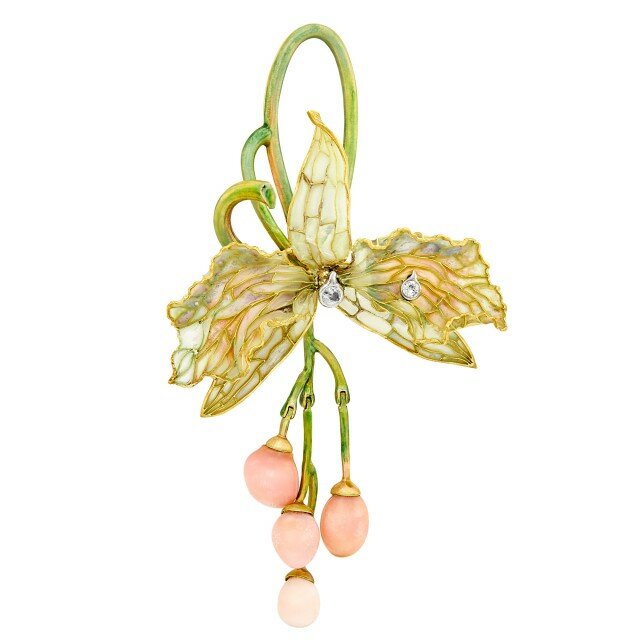
After great popularity in the Art Deco era, there was a lull until the end of the 80s of the 20th century.
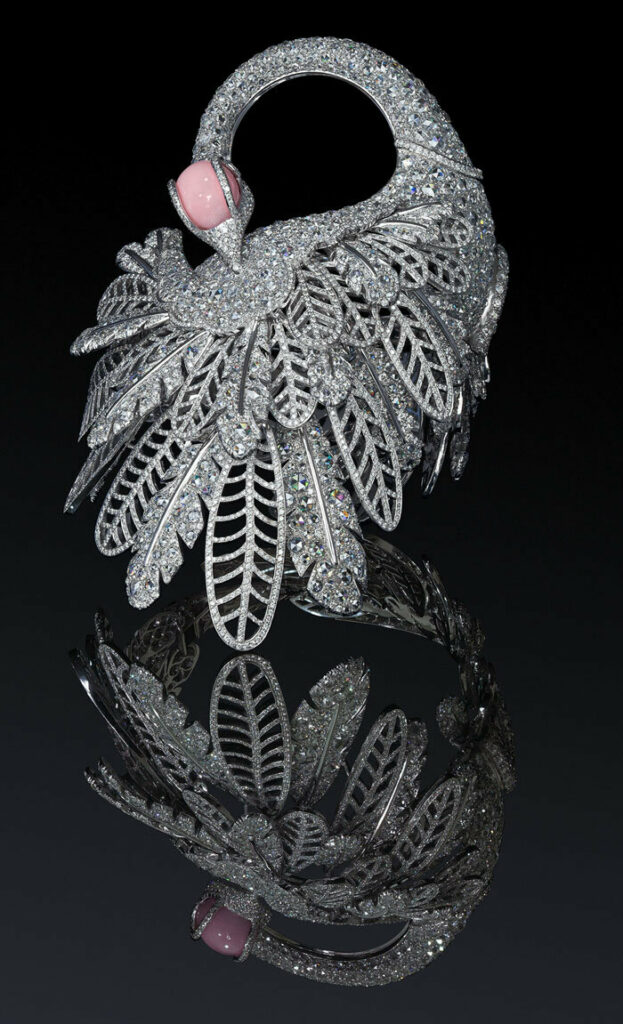
The return of popularity is due in part to Sue Hendrickson, an American professional diver, paleontologist and marine archaeologist. She began buying Conque pearls from Caribbean fishermen, building up a collection of high quality pearls. One of her competitors sold part of her personal collection of Conch pearls to Harry Winston, starting a trend towards using Conch pearls in jewelry.
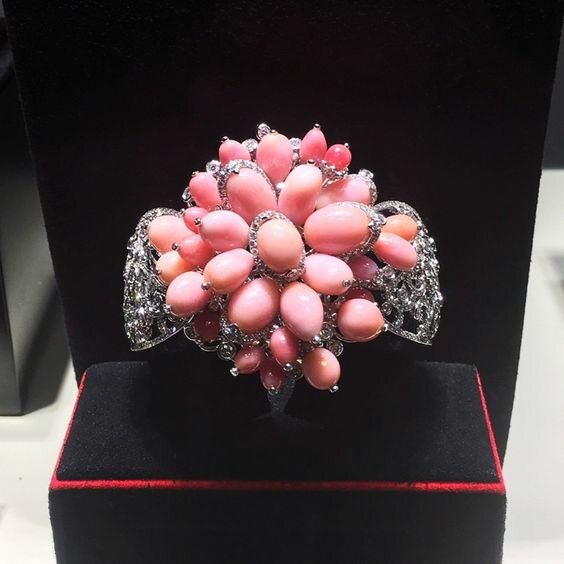
Gorgeous brooches with Conch pearls in different shades:
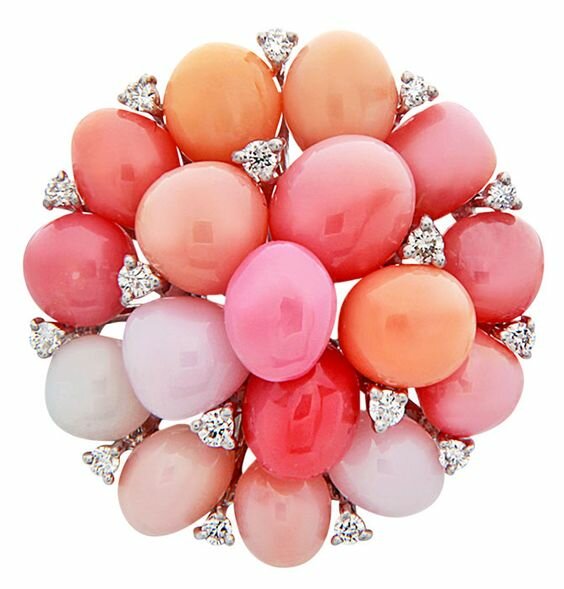


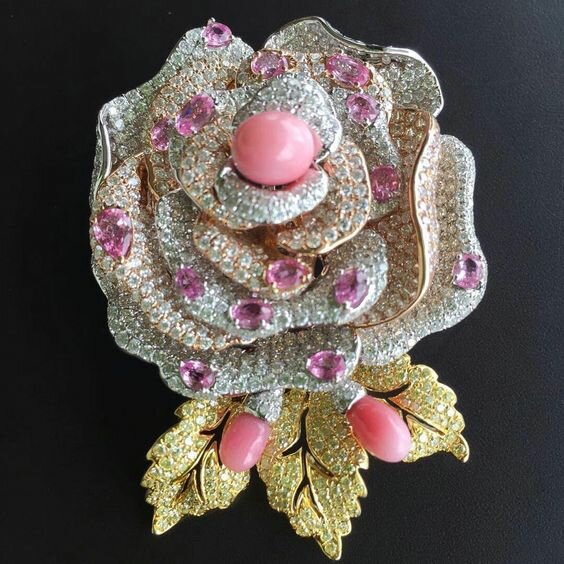


The value of Konk pearls is determined not only by its unique pink color, but also by the fact that it was not possible to cultivate these pearls - all pearls are genuine natural creations, plus, Konk is much stronger than ordinary pearls (hardness on the Mohs scale from 5 to 6 points) .
I hope you enjoyed getting to know the magnificent Conch pearls.

